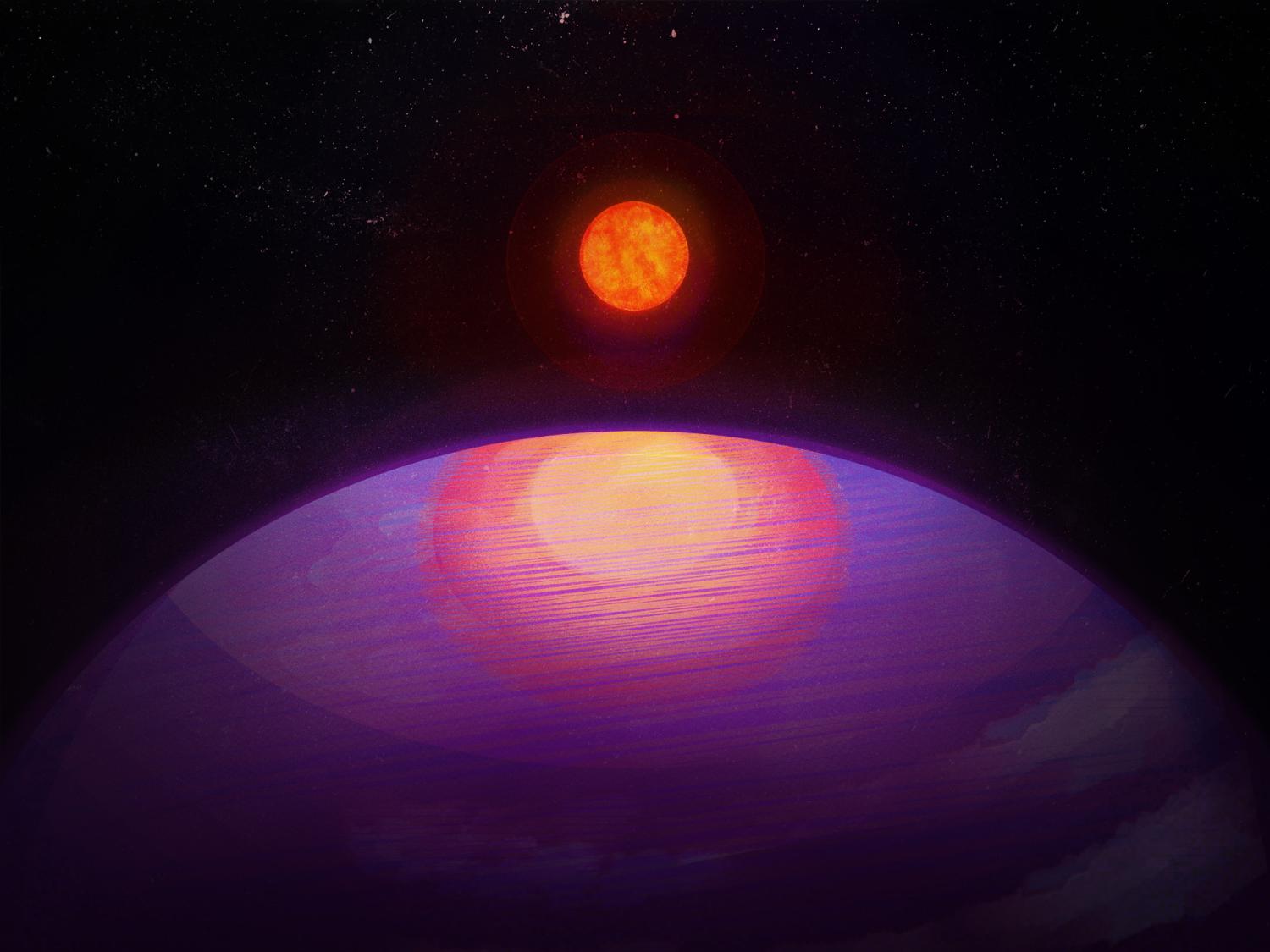2023-11-30 ペンシルベニア州立大学(PennState)
 Artistic rendering of the possible view from LHS 3154b towards its low mass host star. Given its large mass, LHS 3154b probably has a Neptune-like composition. Credit: Penn State / Penn State. Creative Commons
Artistic rendering of the possible view from LHS 3154b towards its low mass host star. Given its large mass, LHS 3154b probably has a Neptune-like composition. Credit: Penn State / Penn State. Creative Commons
◆通常、星から残されたガスと塵の円盤が惑星に進化するが、LHS 3154周囲のディスクには十分な質量がないため、従来の理論では説明が難しいとのこと。この発見は、星と惑星の形成に関する理解を再評価する契機となり、星の初期のディスクに関する新たな調査が求められます。
<関連情報>
- https://www.psu.edu/news/research/story/discovery-planet-too-big-its-sun-throws-solar-system-formation-models/
- https://www.science.org/doi/10.1126/science.abo0233
海王星質量の太陽系外惑星が超低質量星の近傍軌道を周回、太陽系形成モデルに挑戦 A Neptune-mass exoplanet in close orbit around a very low-mass star challenges formation models
Guðmundur Stefánsson,Suvrath Mahadevan,Yamila Miguel,Paul Robertson,Megan Delamer,Shubham Kanodia,Caleb I. Cañas,Joshua N. Winn,Joe P. Ninan,Ryan C. Terrien,Rae Holcomb,Eric B. Ford,Brianna Zawadzki,Brendan P. Bowler,Chad F. Bender,William D. Cochran,Scott Diddams ,Michael Endl ,Connor Fredrick ,Samuel Halverson,Fred Hearty,Gary J. Hill,Andrea S. J. Lin,Andrew J. Metcalf,Andrew Monson,Lawrence Ramsey,Arpita Roy,Christian Schwab,Jason T. Wright,and Gregory Zeimann
Science Published:30 Nov 2023
DOI:https://doi.org/10.1126/science.abo0233
Editor’s summary
Planets form in protoplanetary disks of gas and dust around young stars that are undergoing their own formation process. The amount of material in the disk determines how big the planets can grow. Stefánsson et al. observed a nearby low-mass star using near-infrared spectroscopy. They detected Doppler shifts due to an orbiting exoplanet of at least 13 Earth masses, which is almost the mass of Neptune. Theoretical models do not predict the formation of such a massive planet around a low-mass star (see the Perspective by Masset). The authors used simulations to show that its presence could be explained if the protoplanetary disk were 10 times more massive than expected for the host star. —Keith T. Smith
Abstract
Theories of planet formation predict that low-mass stars should rarely host exoplanets with masses exceeding that of Neptune. We used radial velocity observations to detect a Neptune-mass exoplanet orbiting LHS 3154, a star that is nine times less massive than the Sun. The exoplanet’s orbital period is 3.7 days, and its minimum mass is 13.2 Earth masses. We used simulations to show that the high planet-to-star mass ratio (>3.5 × 10−3) is not an expected outcome of either the core accretion or gravitational instability theories of planet formation. In the core-accretion simulations, we show that close-in Neptune-mass planets are only formed if the dust mass of the protoplanetary disk is an order of magnitude greater than typically observed around very low-mass stars.



